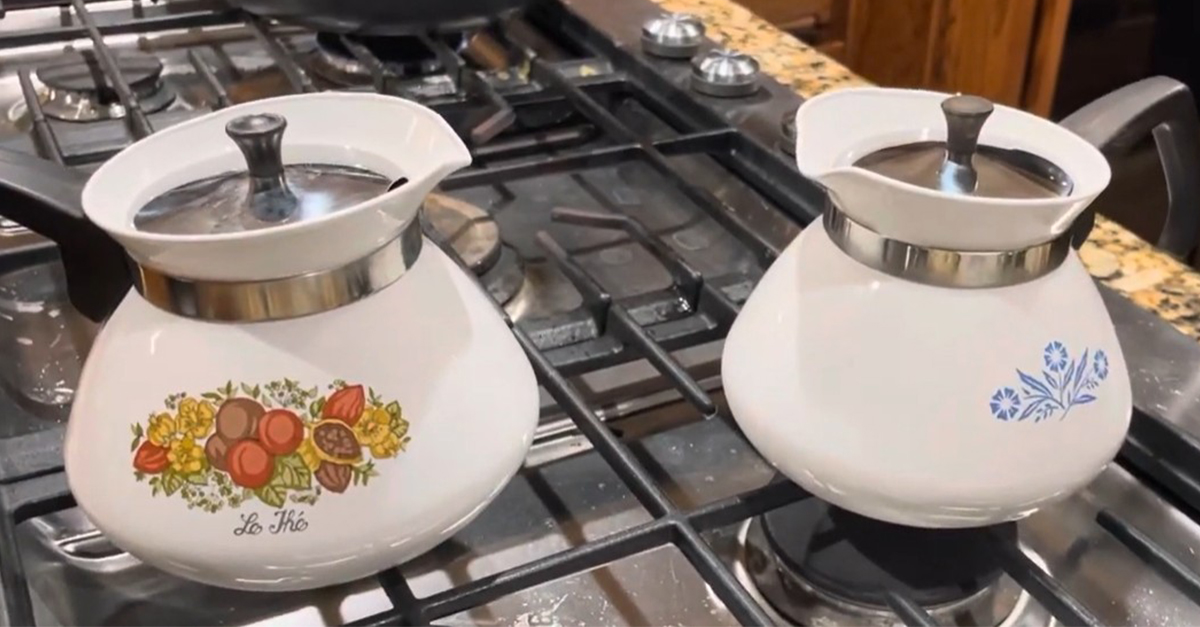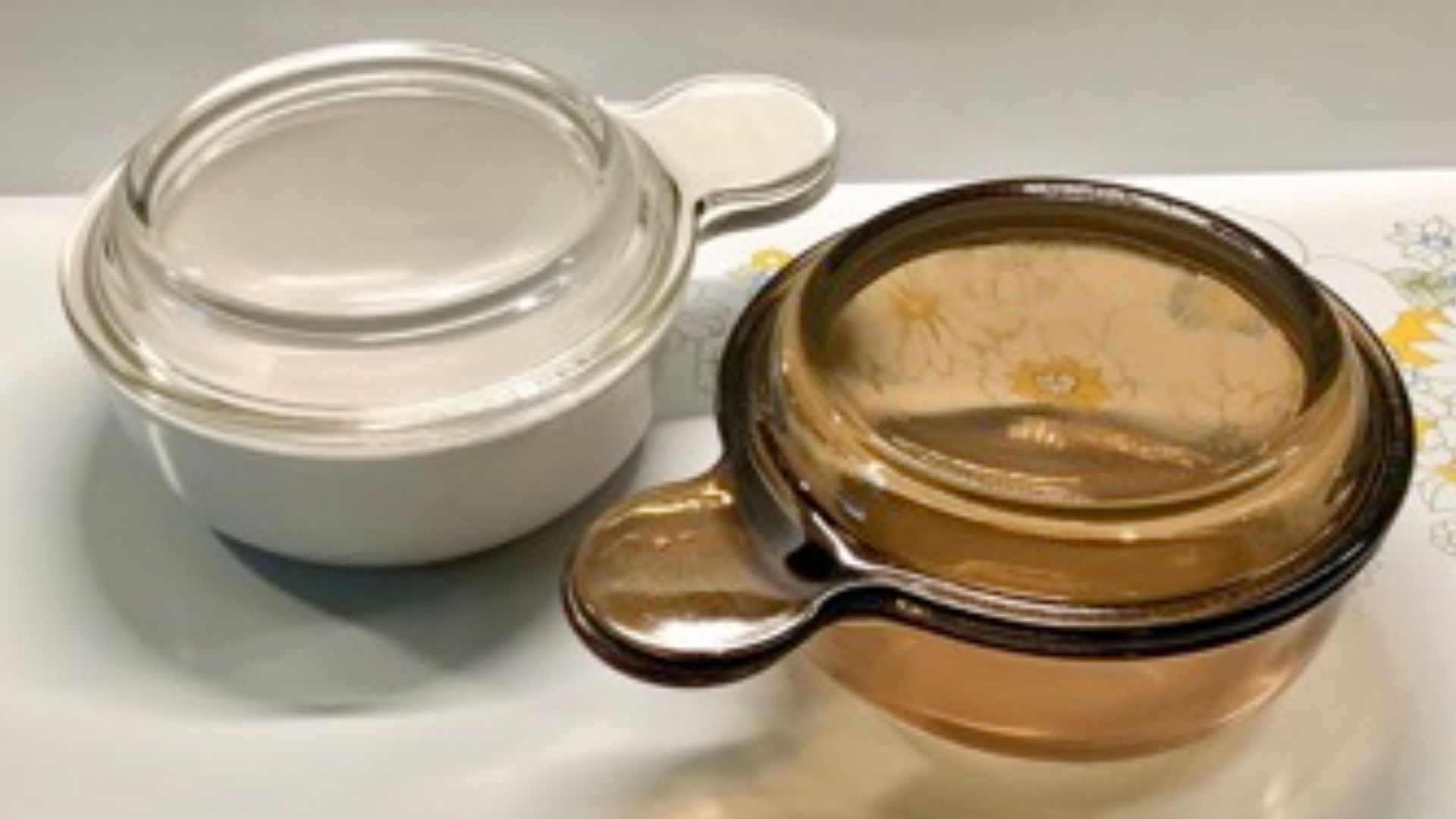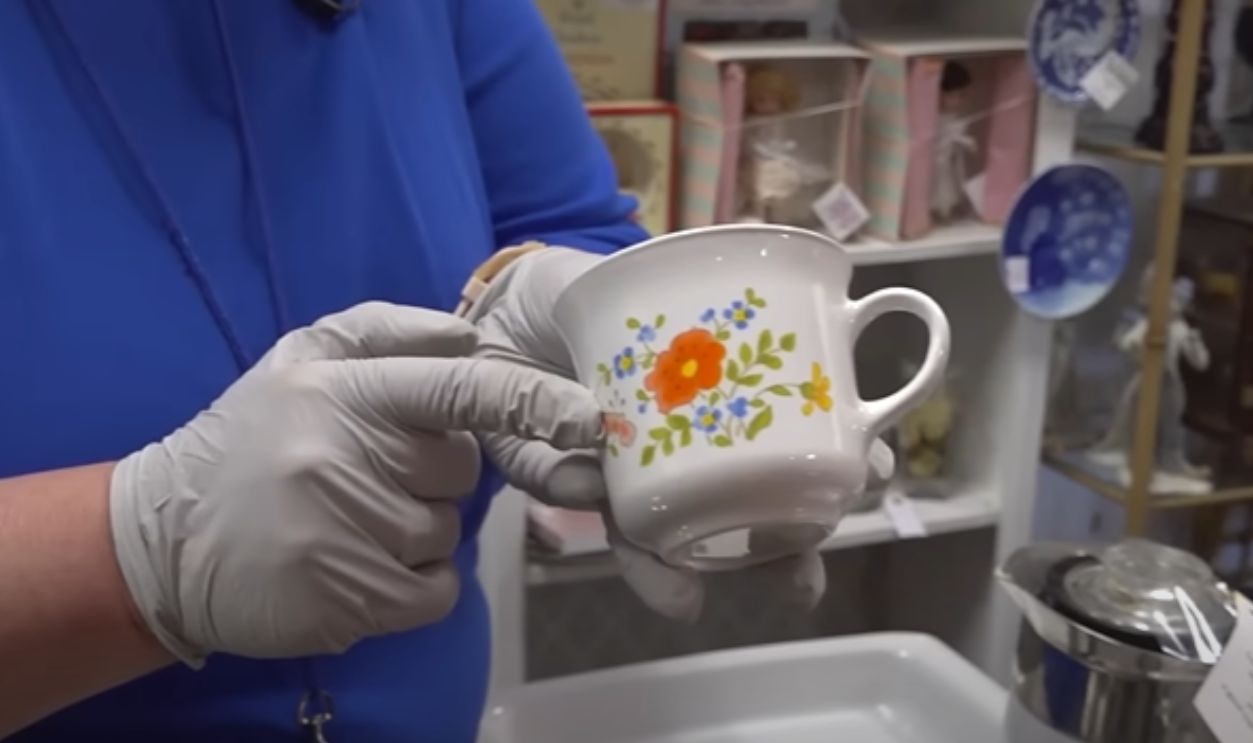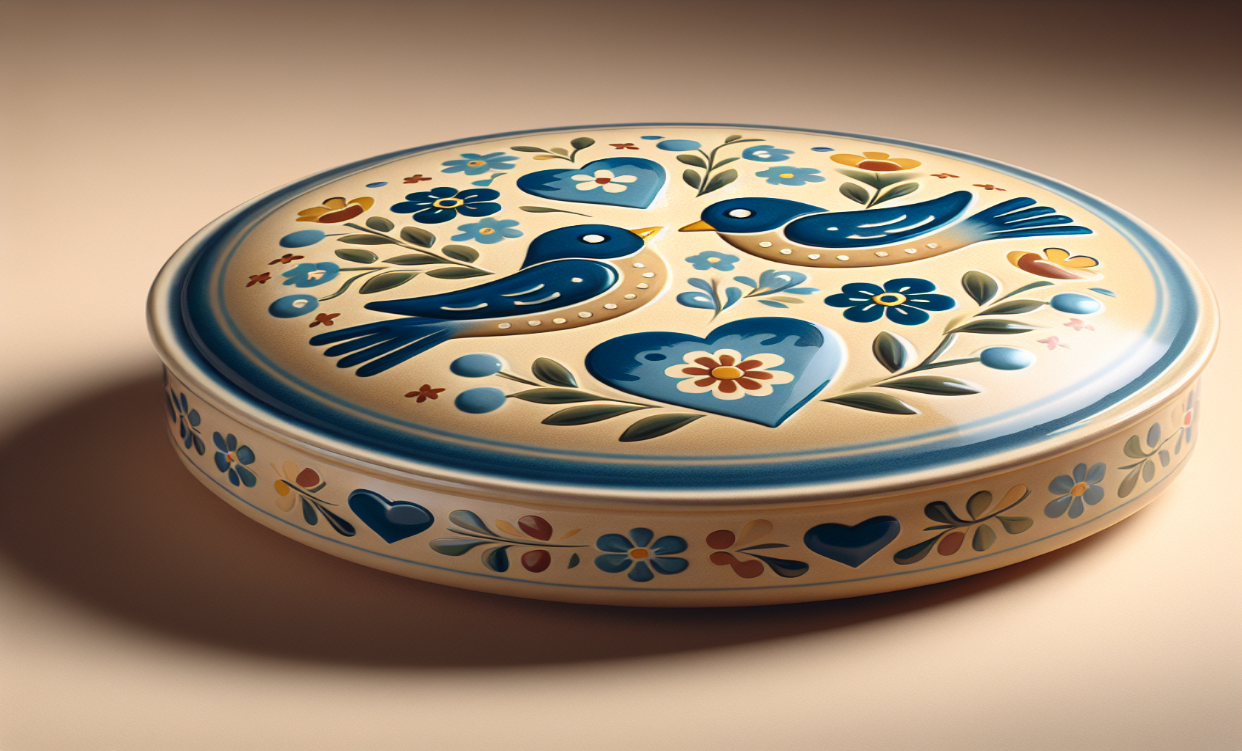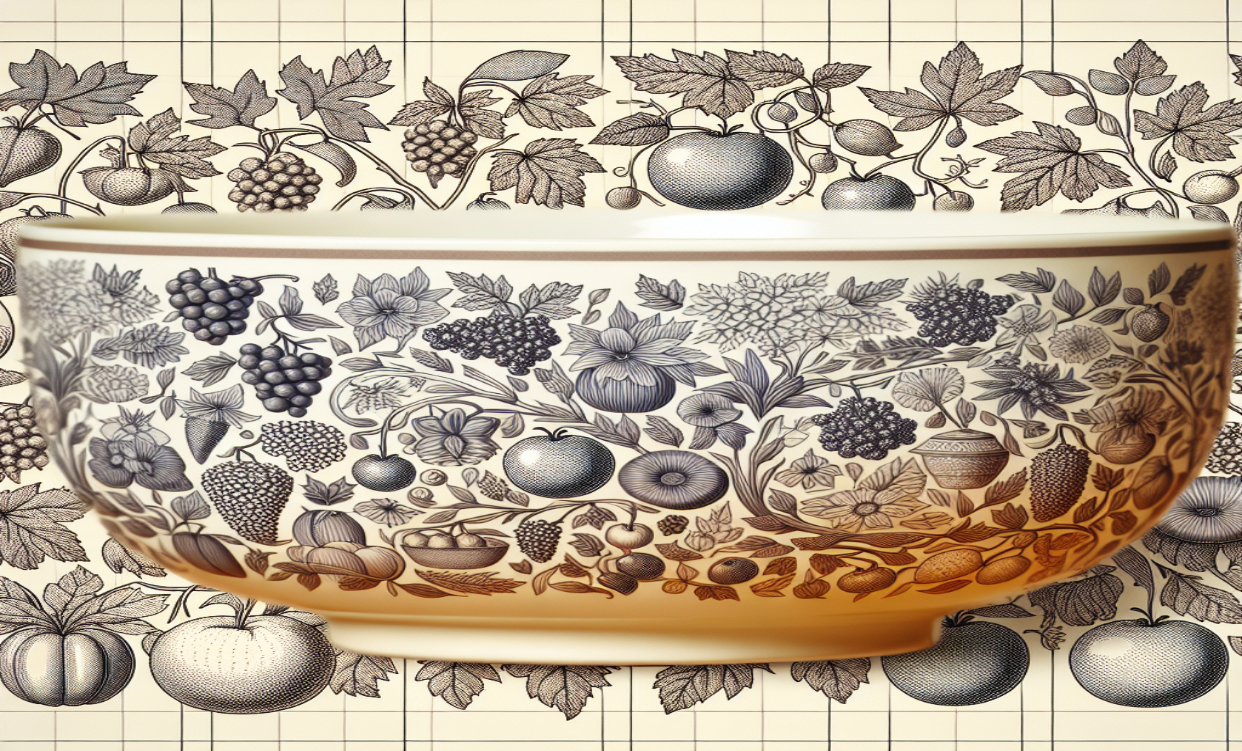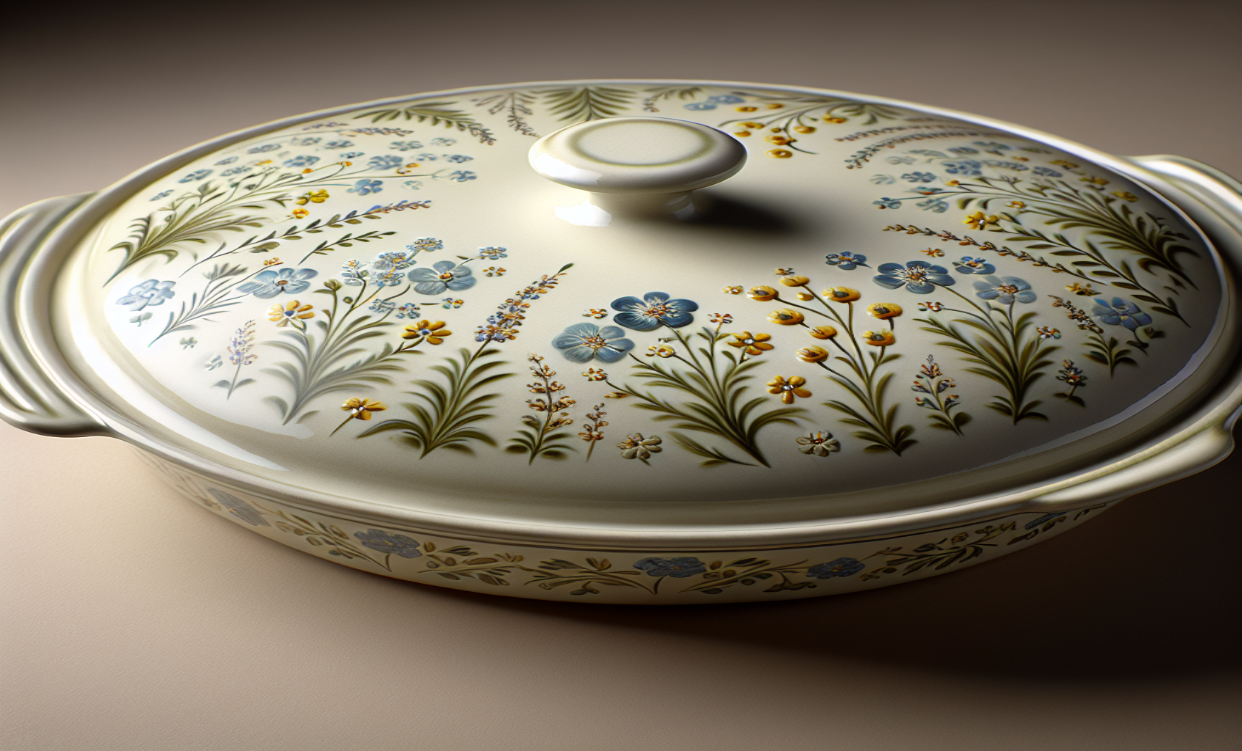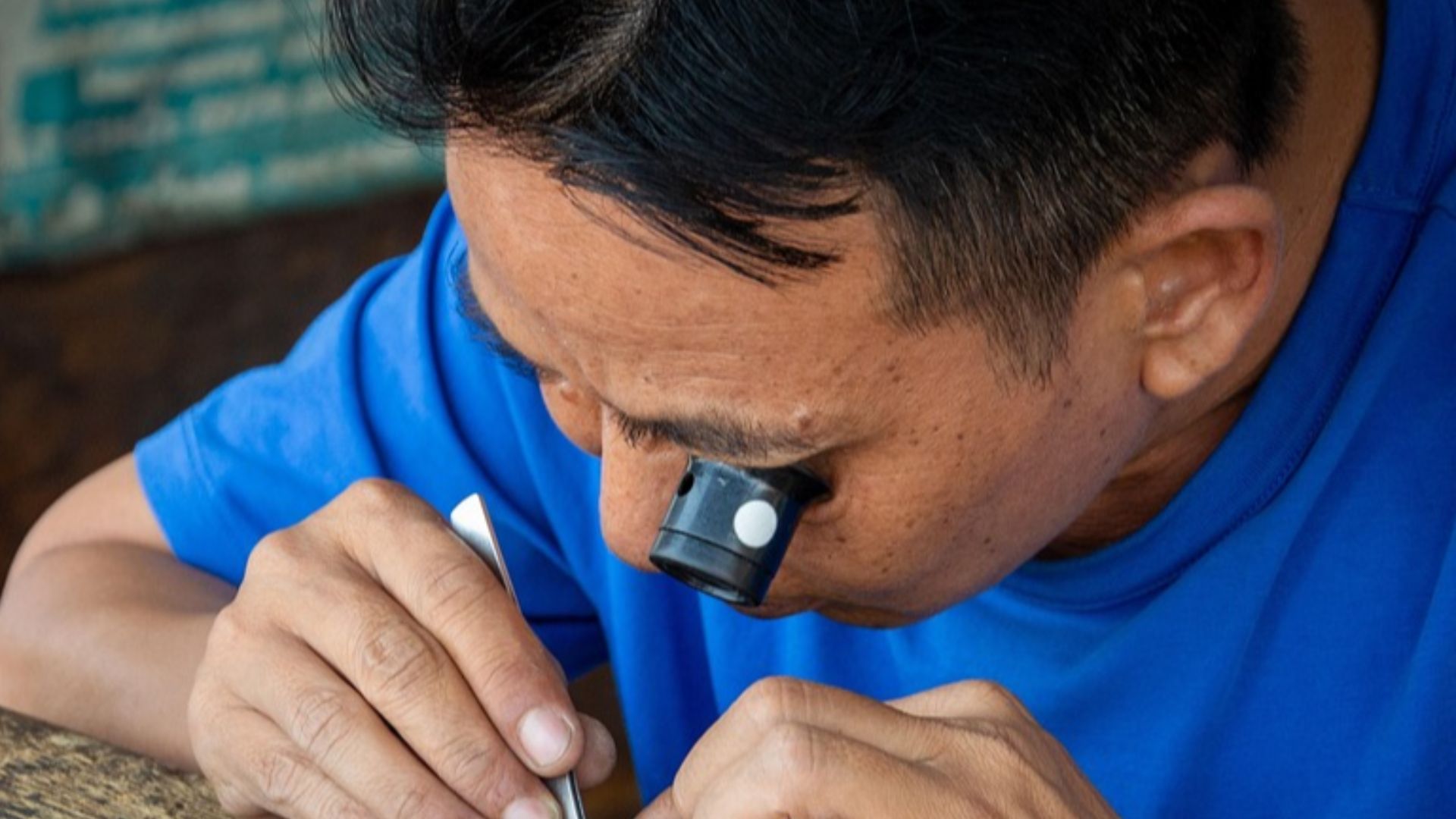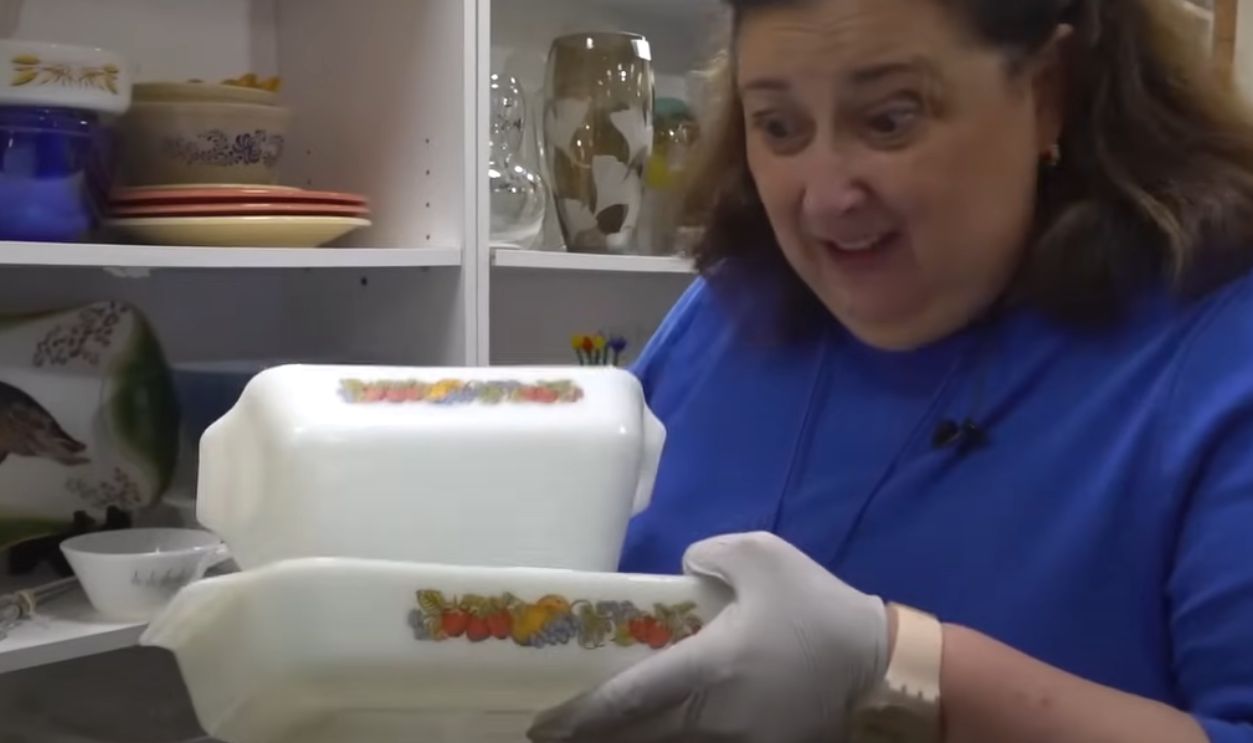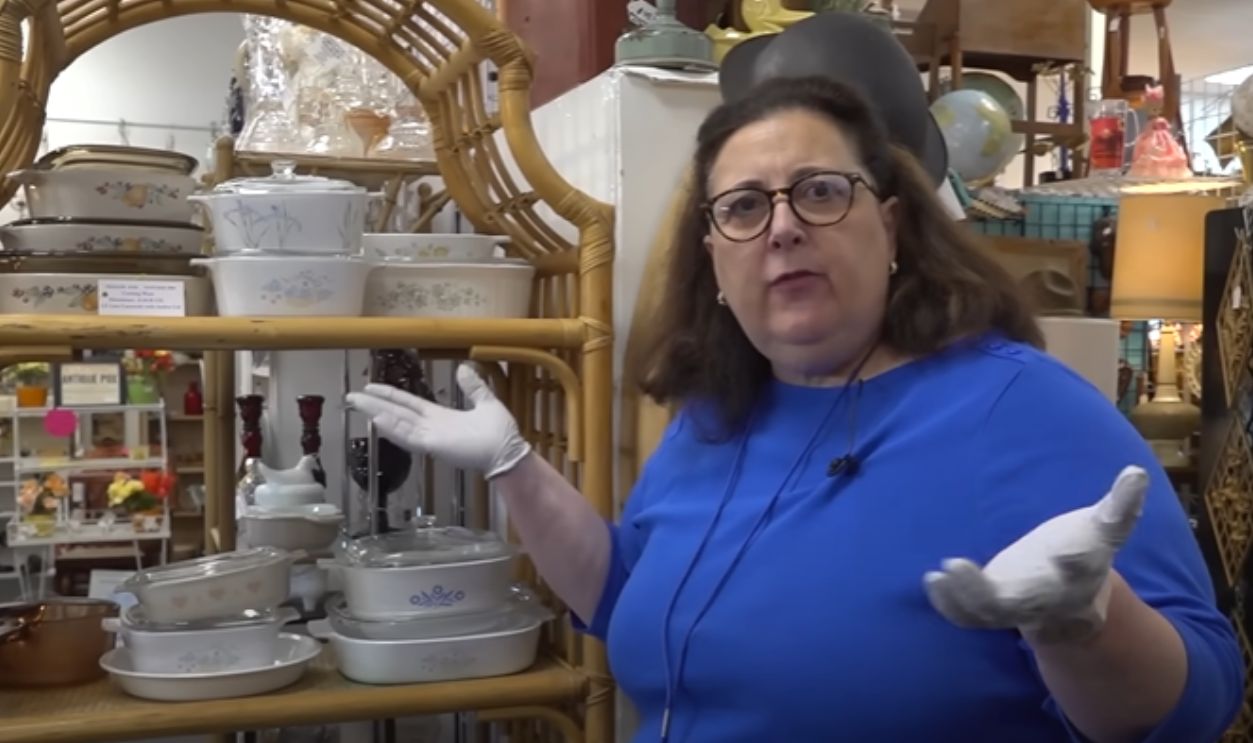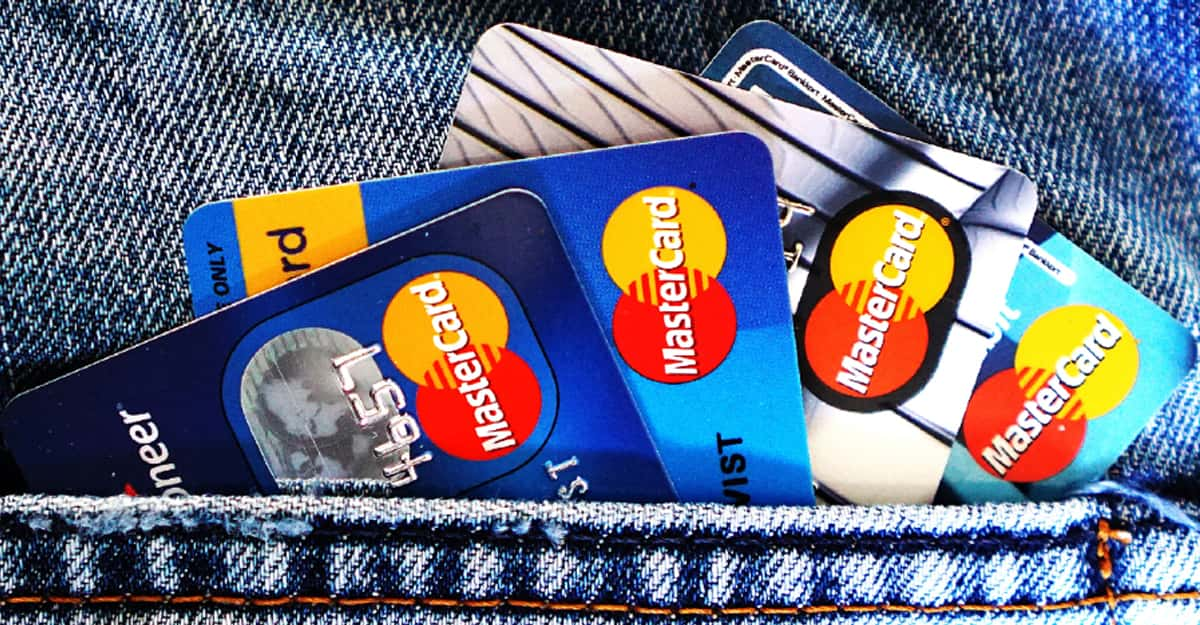From The Everyday To The Timeless
They were at one time an everyday kitchen staple, but CorningWare dishes have now become prized collectibles. Many designs now sell for hundreds or sometimes even thousands of dollars. We look at the history of CorningWare, why it’s gained value, and the specific patterns that attract the discerning eye of collectors willing to pay good money in today’s vintage market.
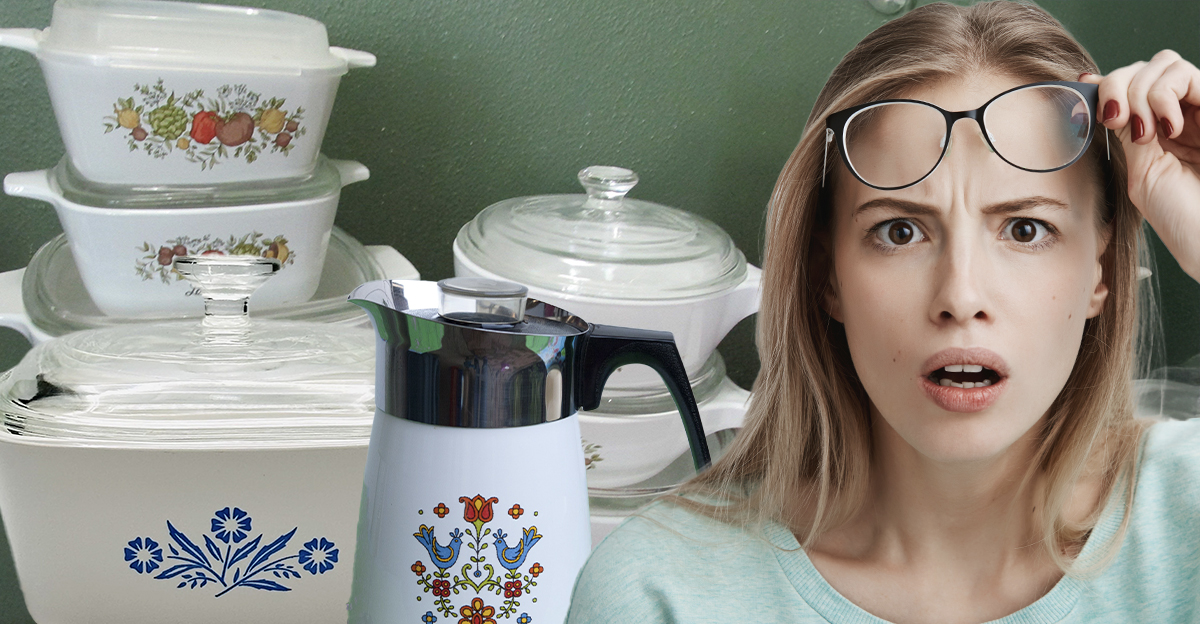
Origins
CorningWare was first created in 1958 by Corning Glass Works. Made from a unique glass-ceramic material called Pyroceram, the dishes were extremely resistant to thermal shock. This durability made them perfect for moving from freezer to oven to table, a highly novel concept in those days.
Rise In Popularity
During the 60s and 70s, CorningWare became a household name. Families valued its durability and versatility, while their typical floral and geometric designs fit perfectly into the theme of a lot of mid-century kitchens. It became a mark of practicality and style, handed down through generations.
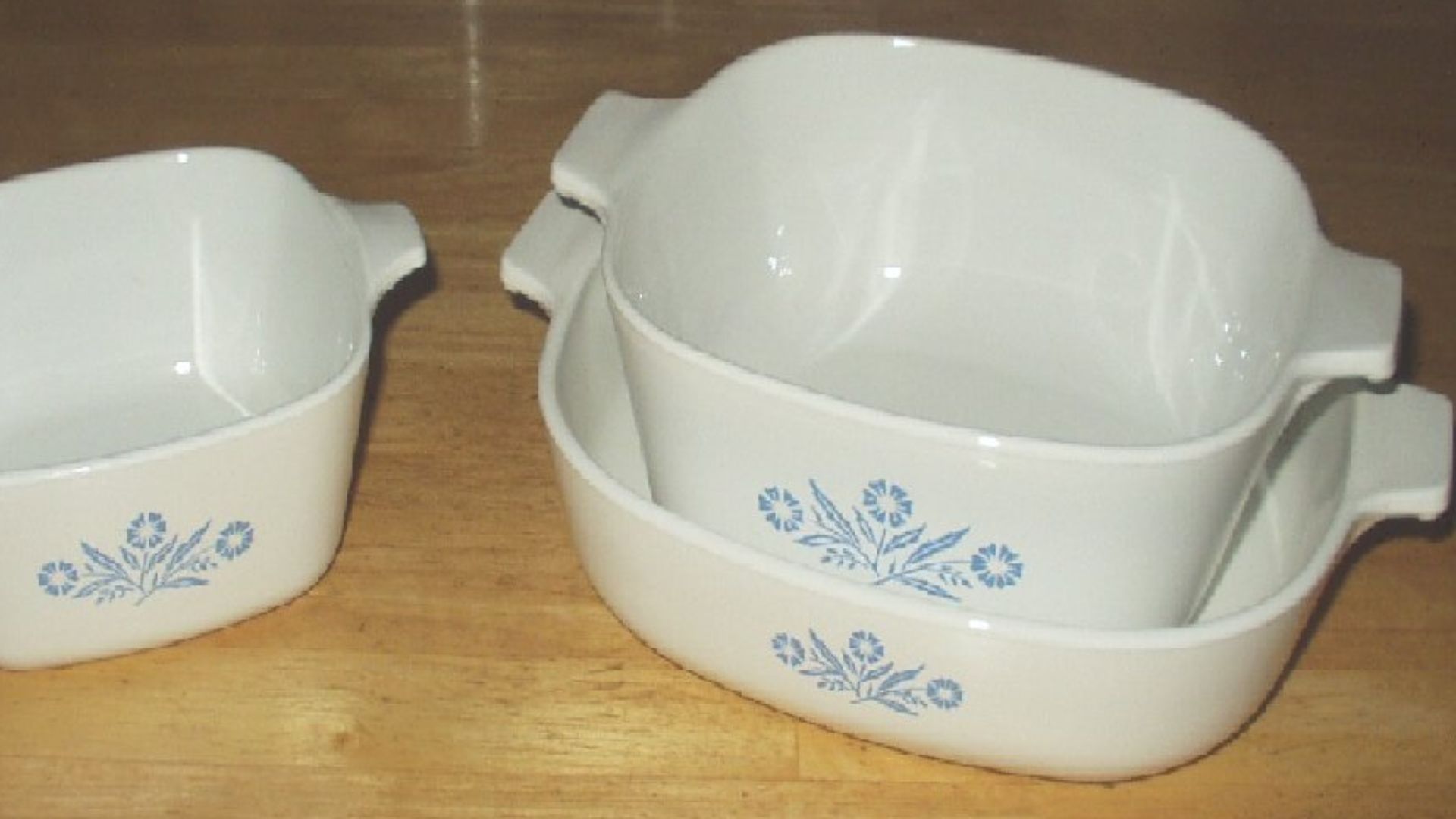 User:Splarka, Wikimedia Commons
User:Splarka, Wikimedia Commons
When CorningWare Became Valuable
For decades, CorningWare was considered to be no more than ordinary kitchenware. Its collectible status started to pick up momentum in the 90s and 2000s, as production shifted and a lot of the old familiar patterns were discontinued. Nostalgia and rarity began to drive demand, with some hard-to-find patterns allegedly commanding thousands of dollars at auction. More about that in a moment
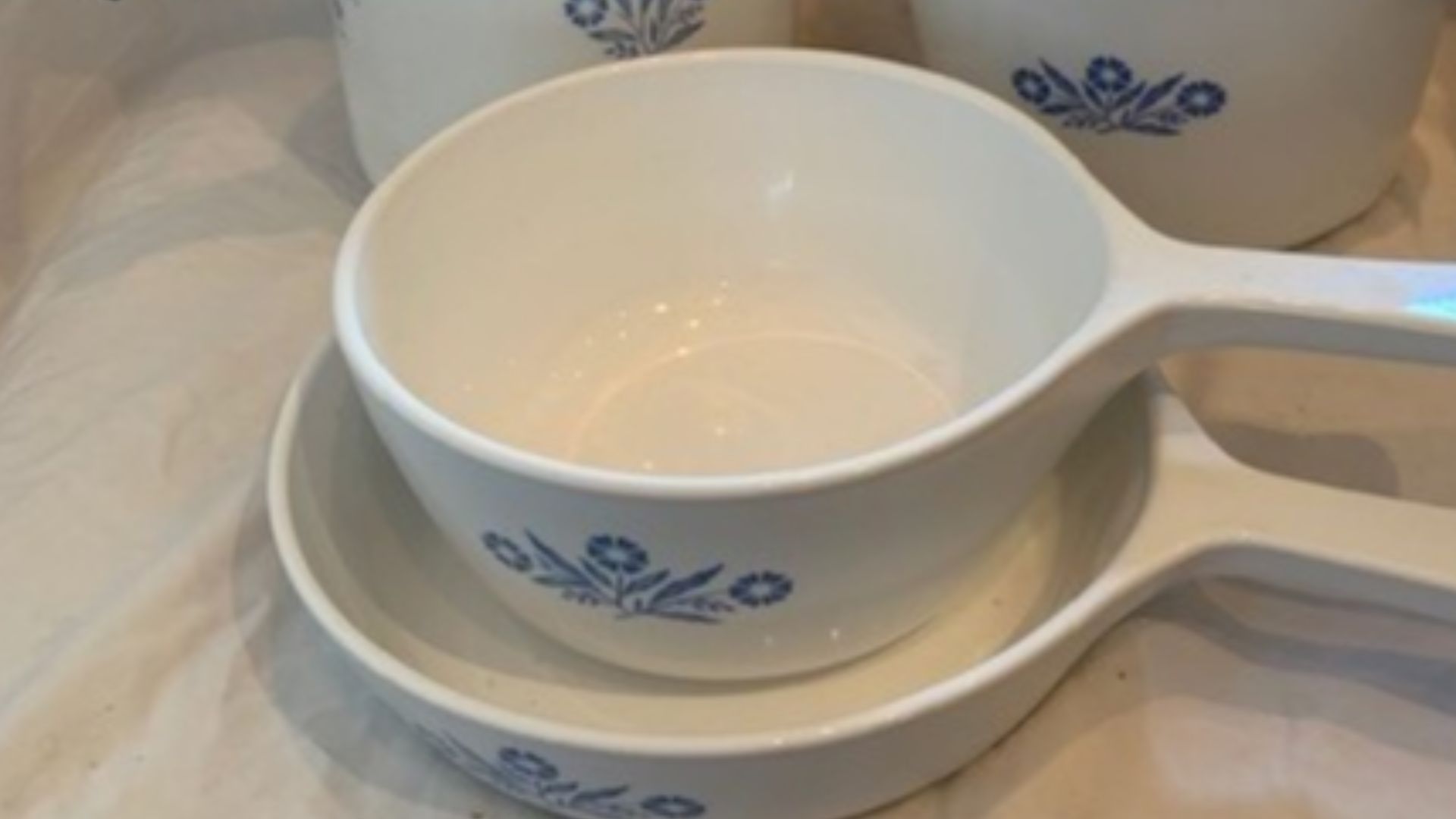 Melissa Highton, Wikimedia Commons
Melissa Highton, Wikimedia Commons
Why Collectors Value CorningWare
Collectors prize CorningWare for its durability, vintage charm, and unique pattern designs. Rarity plays the biggest role, as some patterns were produced for only a short time. Mint-condition pieces, complete sets, or unusual dish shapes fetch the highest prices among enthusiasts.
Beware Of Unrealistic Price Expectations
While some CorningWare items do command high prices, the vast majority never reach sums as lofty as thousands of dollars. Listings showing thousands of dollars are almost always overinflated or speculative. Buyers should always temper expectations; only the rarest pieces in mint condition can justify premium pricing.
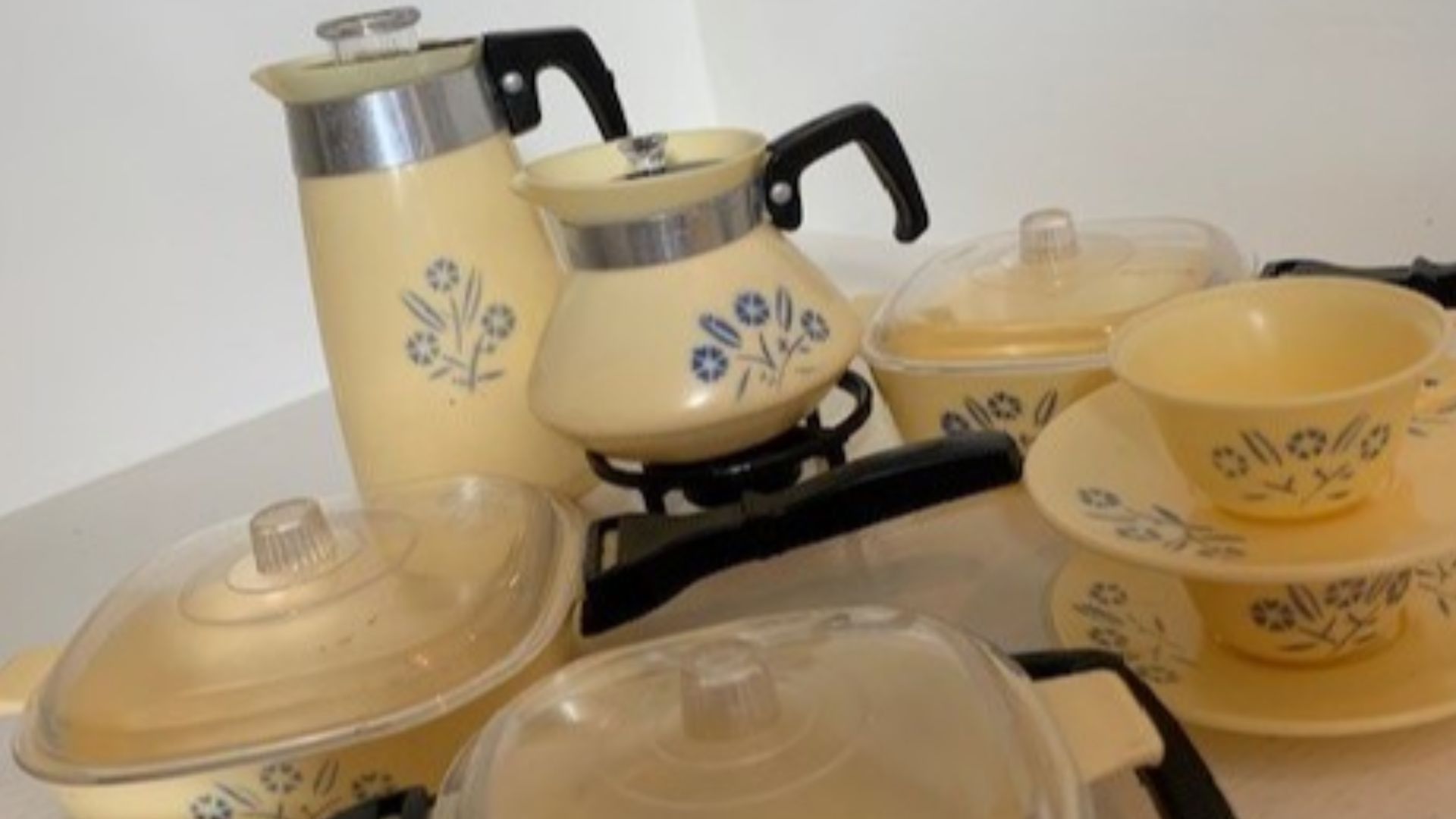 Melissa Highton, Wikimedia Commons
Melissa Highton, Wikimedia Commons
Reasons To Be Skeptical Of Inflated Sales
High prices often stem from hype, misidentification, or bidding wars rather than true rarity. Some sellers misstate condition or pattern, hoping nostalgia drives buyers. Also, online listings often lack completed comparable items, making “sold” prices unreliable. Always verify with documented sales and antique experts before you believe valuations in the thousands of dollars.
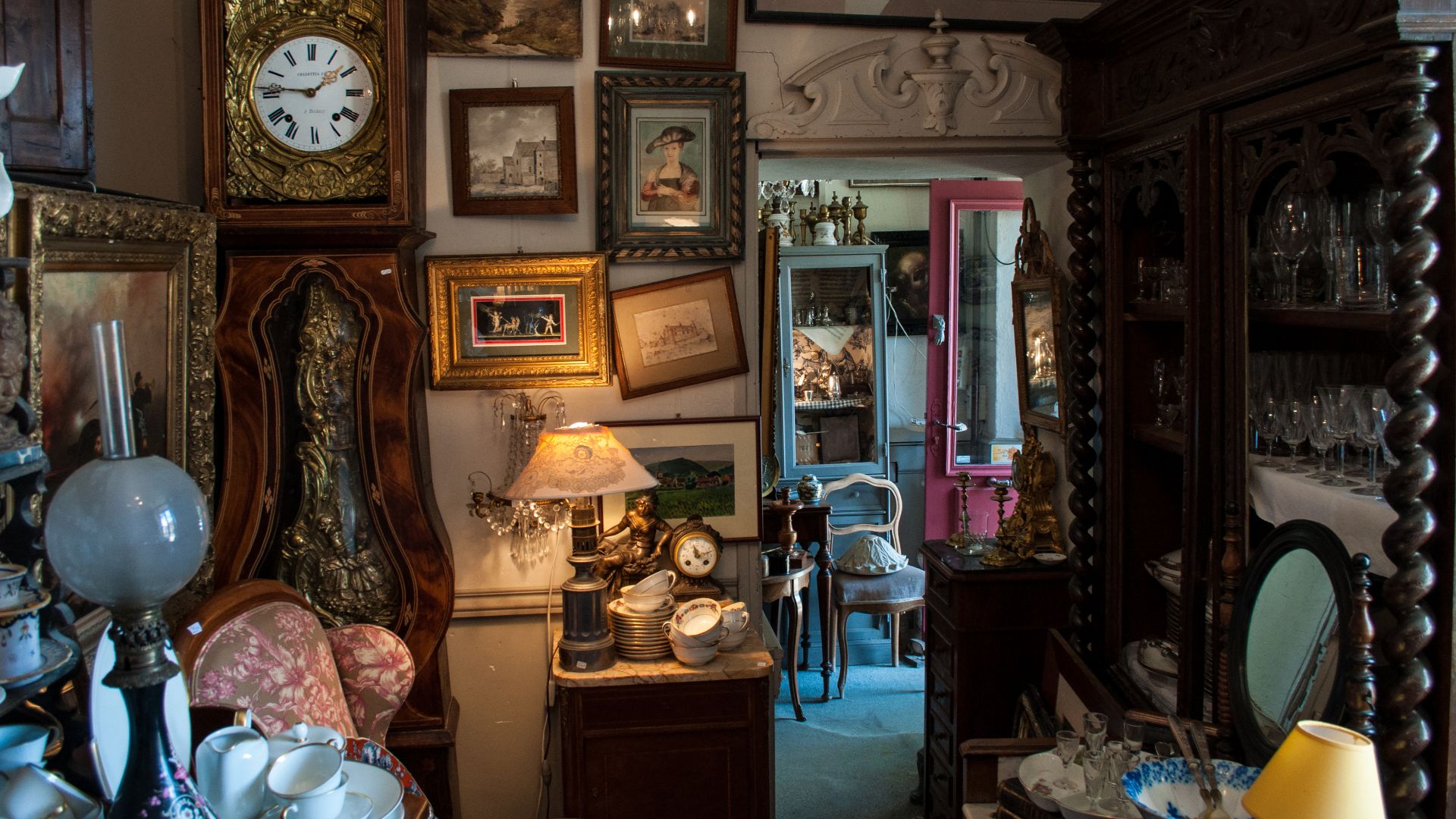 Peter Heeling; Skitterphoto, Wikimedia Commons
Peter Heeling; Skitterphoto, Wikimedia Commons
The Most Sought-After Pattern: Spice Of Life
One of the most classic patterns is Spice of Life, which came out in the 70s. Featuring French vegetable names with illustrations of produce, this line is now iconic. While many of these pieces are quite common, rare markings such as “La Romarin” or “Le Persil” can command higher prices. Price: $300–$1000
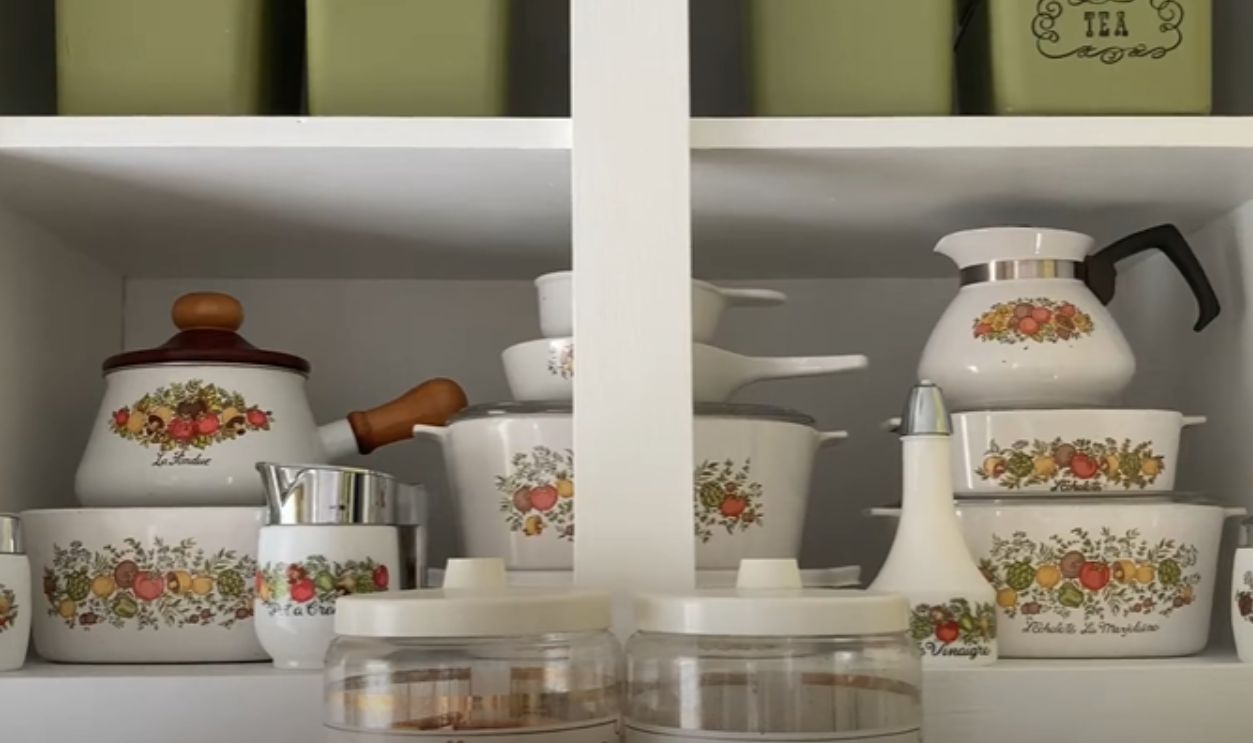 VINTAGE CORNINGWARE SPICE OF LIFE COLLECTION, Vintage Vibes
VINTAGE CORNINGWARE SPICE OF LIFE COLLECTION, Vintage Vibes
Blue Cornflower’s Enduring Legacy
The Blue Cornflower pattern, with its simple three-flower motif, was the first ever CorningWare design. Produced from 1958 right up into the late 80s, it’s still one of the most recognizable of them all. Common examples are affordable, but older versions with this design in pristine condition are highly collectible. Price: $100–$1000
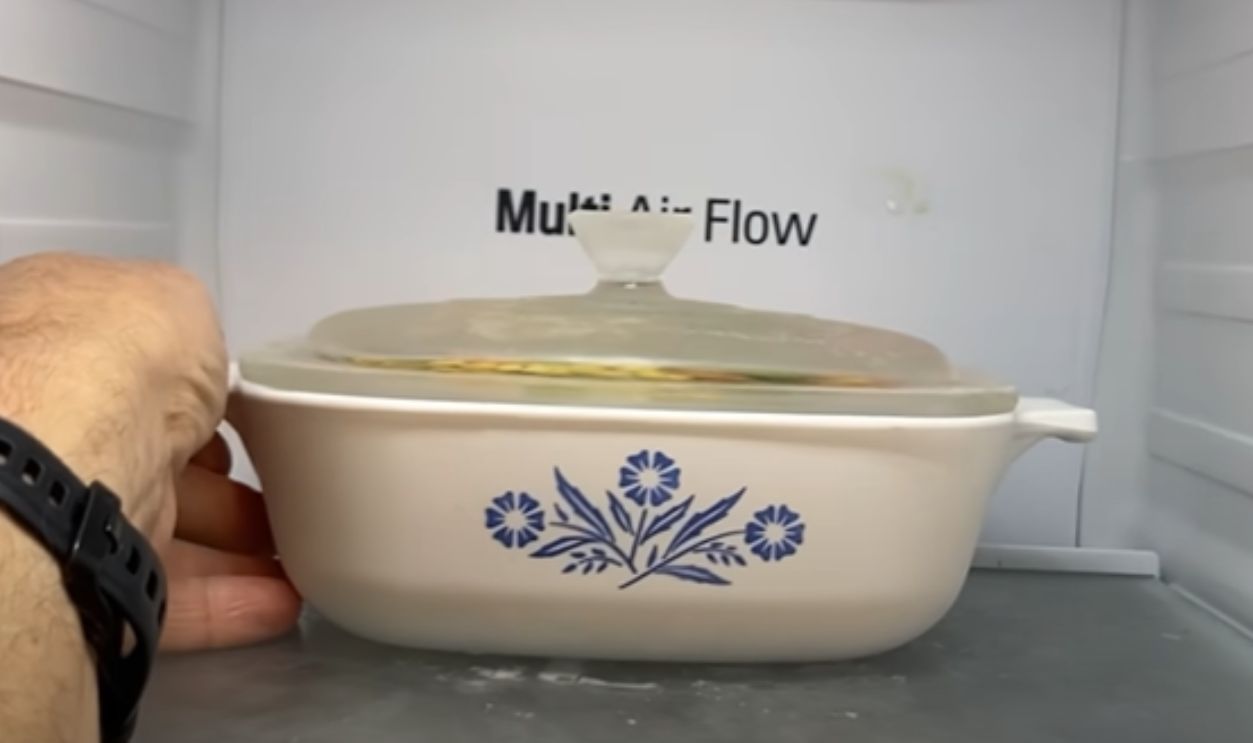 Vintage CorningWare | Most Versatile Cookware Ever Made?, I Want To Cook
Vintage CorningWare | Most Versatile Cookware Ever Made?, I Want To Cook
Wildflower Brings Back The 70s
Released in 1977, the Wildflower pattern is a distinctive display of bright orange, yellow, and green blooms. Produced until 1984, it preserves the spirit of that decade’s bold designs. Collectors like its vibrant colors, and complete sets can fetch substantial sums. Price: $80–$100
The Country Festival Pattern
The Country Festival pattern, often called “Friendship Bluebird,” features cheerful bluebirds surrounded by hearts and florals. This is another 70s motif, and it was especially popular among folk-art lovers. Rare pieces in mint condition can be worth hundreds today. Price: $25–$60
The Abundance Of Nature’s Bounty
The Nature’s Bounty pattern, featuring grapes, fruit, and rustic designs, is a standout with collectors. It’s not as famous as Cornflower or Spice of Life, but its earthy tones appeal to vintage enthusiasts. Selected casserole sizes and limited releases have gone up significantly in value over the years. Price: $50–$120
Renaissance And Sculptured Patterns
CorningWare also played around with elegant designs like Renaissance and Sculptured patterns. These lines made use of more sophisticated floral artwork and textured surfaces. Though they were produced in smaller numbers, they now bring serious interest from collectors on the hunt for rare and unique kitchenware styles. Price: $80–$150
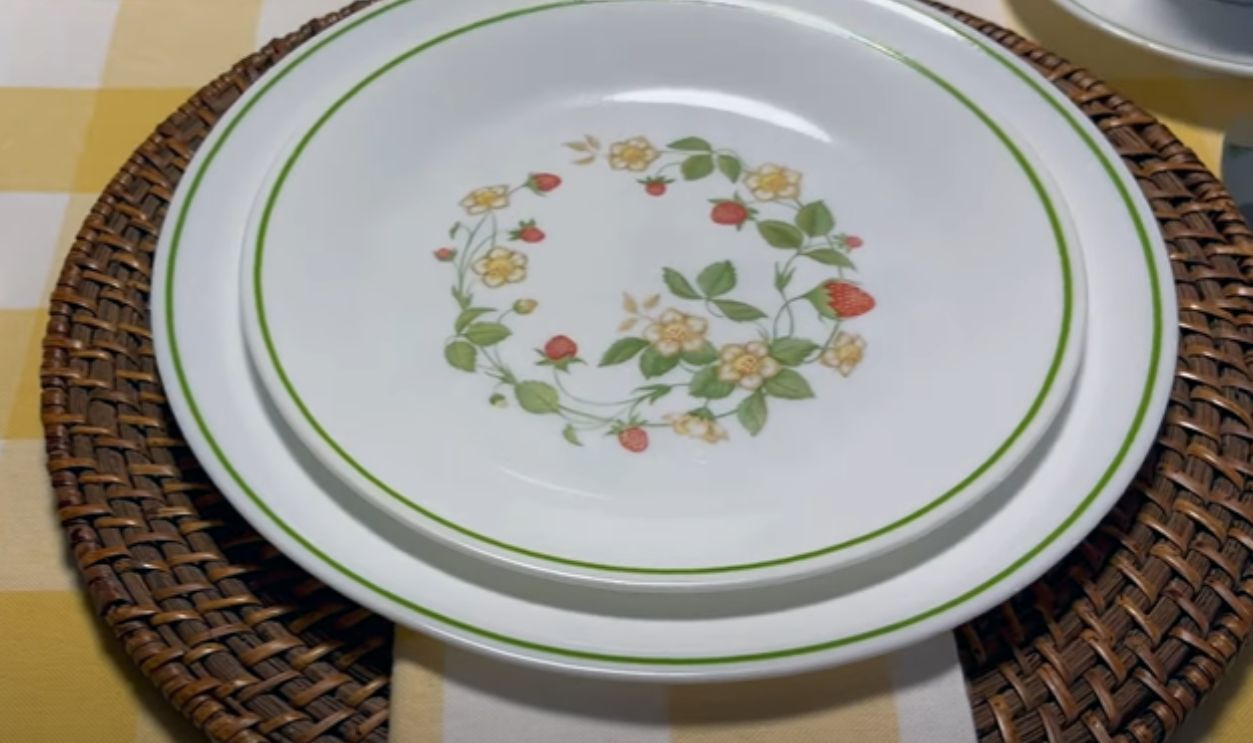 Vintage Dishes: My Corning Ware and Corelle Collection, MistyLand
Vintage Dishes: My Corning Ware and Corelle Collection, MistyLand
The Popularity Of French White
French White, introduced in 1978, was a sudden stylistic shift to minimalism. With sleek, all-white dishes, these appealed to more modern tastes. These are still in full production today, but the early versions of French White are considered collectible, especially those ones with unusual sizes or lids. Price: $75–$300
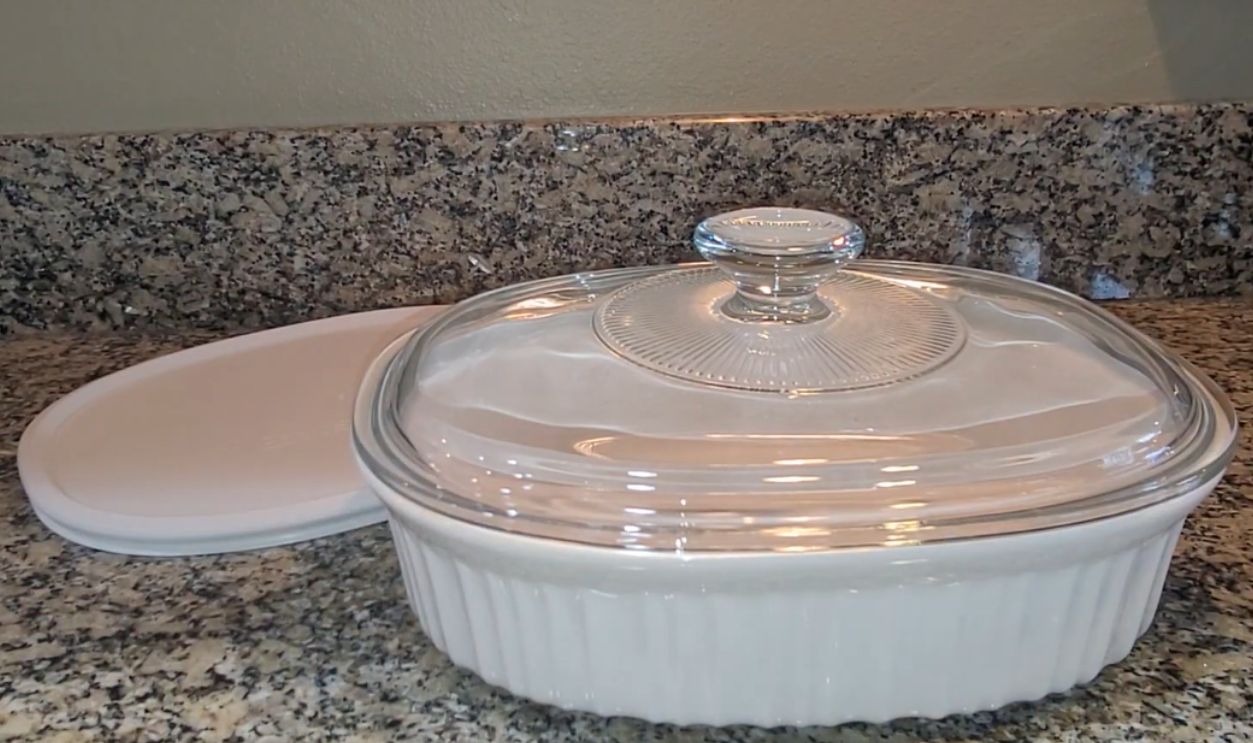 Corningware Cookware - French White 1.5QT Container, Nitty Gritty Product Reviews
Corningware Cookware - French White 1.5QT Container, Nitty Gritty Product Reviews
The Rarity Of Black Starburst
Black Starburst is one of the rarest and most valuable CorningWare designs. With only a brief production run, its modernist black star motif against white ceramic has made it highly sought-after. Collectors are willing to pay thousands for complete sets in excellent condition. Expected Price: $150
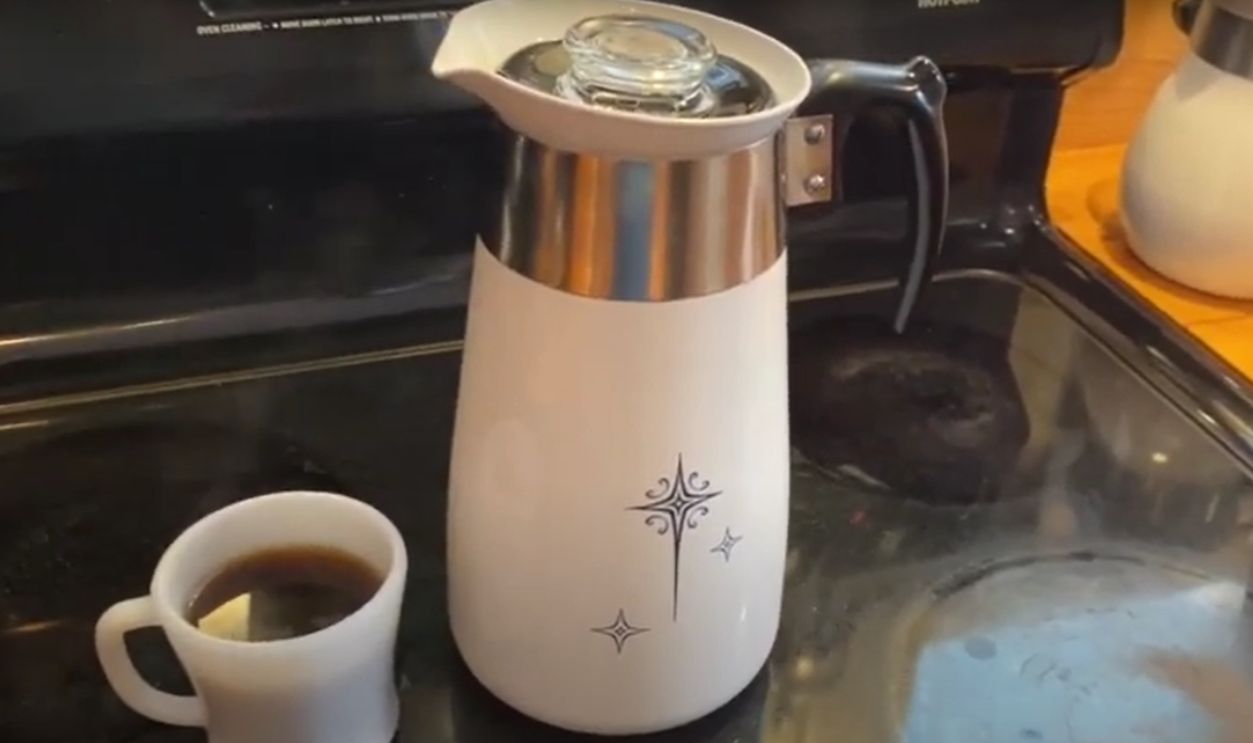 Review #25 1959 Corning-ware P 108 Starburst Percolator, Thrift Store Perk
Review #25 1959 Corning-ware P 108 Starburst Percolator, Thrift Store Perk
The Forever Classic English Meadow Pattern
English Meadow, featuring blue, yellow, and green wildflowers, was produced between 1977 and 1985. It remains a beloved favorite for many collectors. While some pieces are common, larger casseroles or unusual dish sizes with this design are worth significantly more.
The Magnetism Of Platinum Filigree
Platinum Filigree, a fine gray scroll design on white, is considered one of CorningWare’s more elegant patterns. Released in 1966 as saucepans and coffee percolators, it’s nowhere near as common as Cornflower or Spice of Life, but it carries appeal for collectors seeking understated designs. Its rarity keeps demand strong among vintage hunters. Price: $25–$100
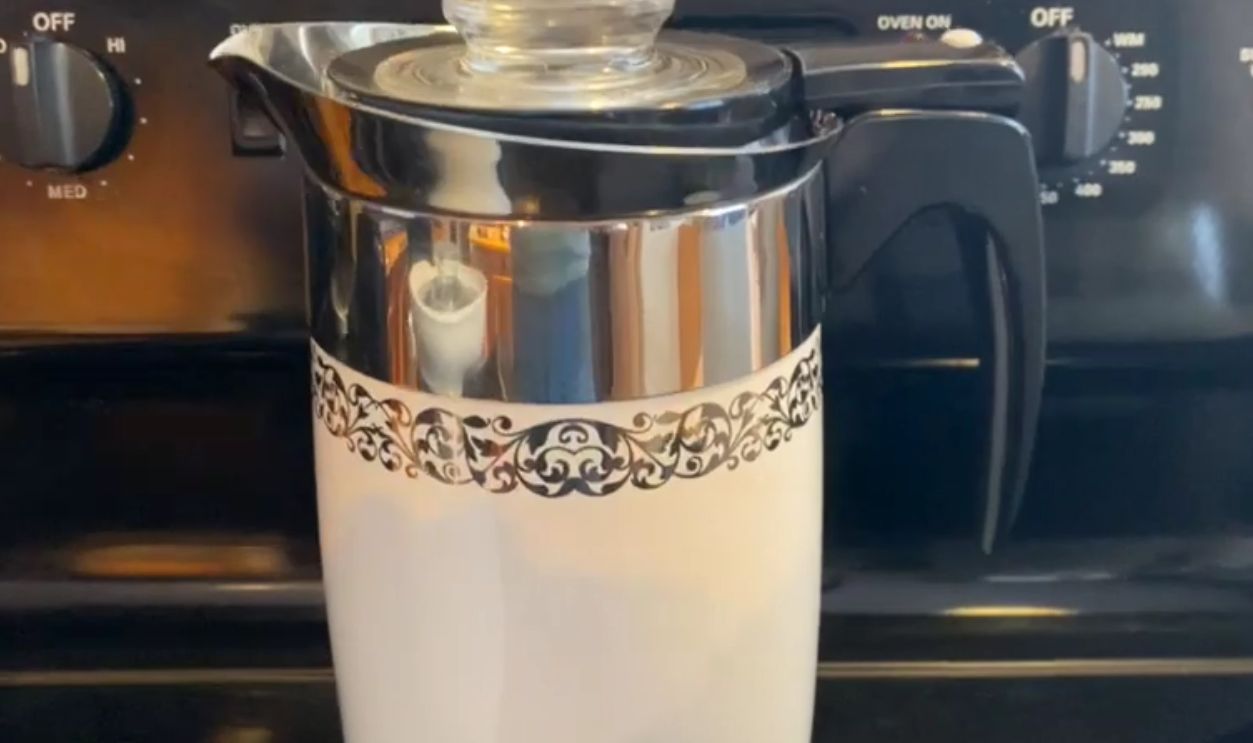 Review #25 1959 Corning-ware P 108 Starburst Percolator, Thrift Store Perk
Review #25 1959 Corning-ware P 108 Starburst Percolator, Thrift Store Perk
How Condition Impacts Value
Condition is crucial when assessing CorningWare’s worth. Pieces with chips, cracks, or faded patterns lose value quickly. Mint-condition dishes with lids intact, especially in their original packaging, can increase in value tenfold compared to worn versions.
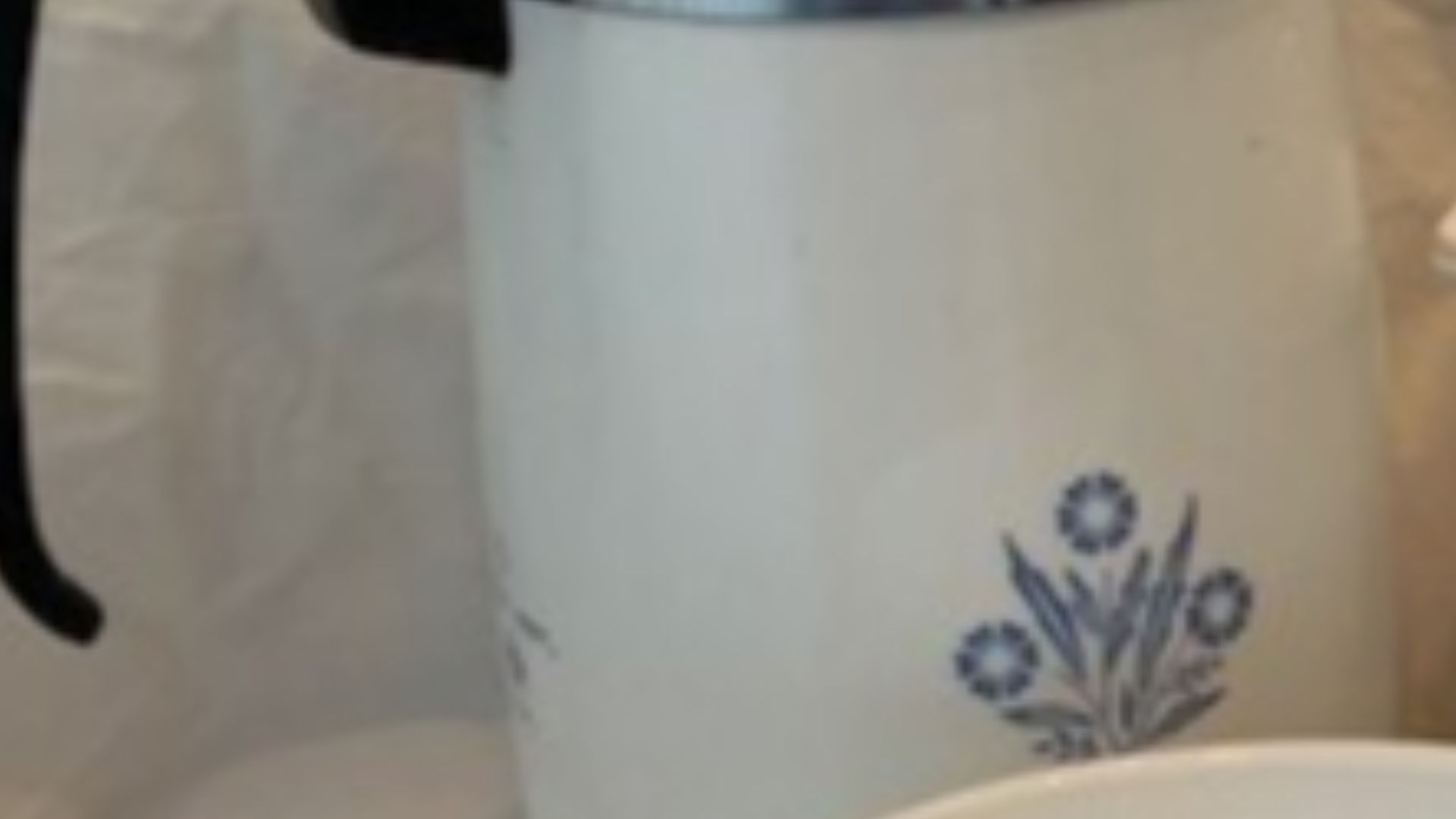 Melissa Highton, Wikimedia Commons
Melissa Highton, Wikimedia Commons
Why Certain Dish Shapes Sell Higher
Not all pieces are equally valuable. Standard casseroles may be common, but unusual shapes—like petite pans, percolators, or specialty roasters—fetch premium prices. Collectors prize unique forms that are harder to find, especially when combined with rare patterns.
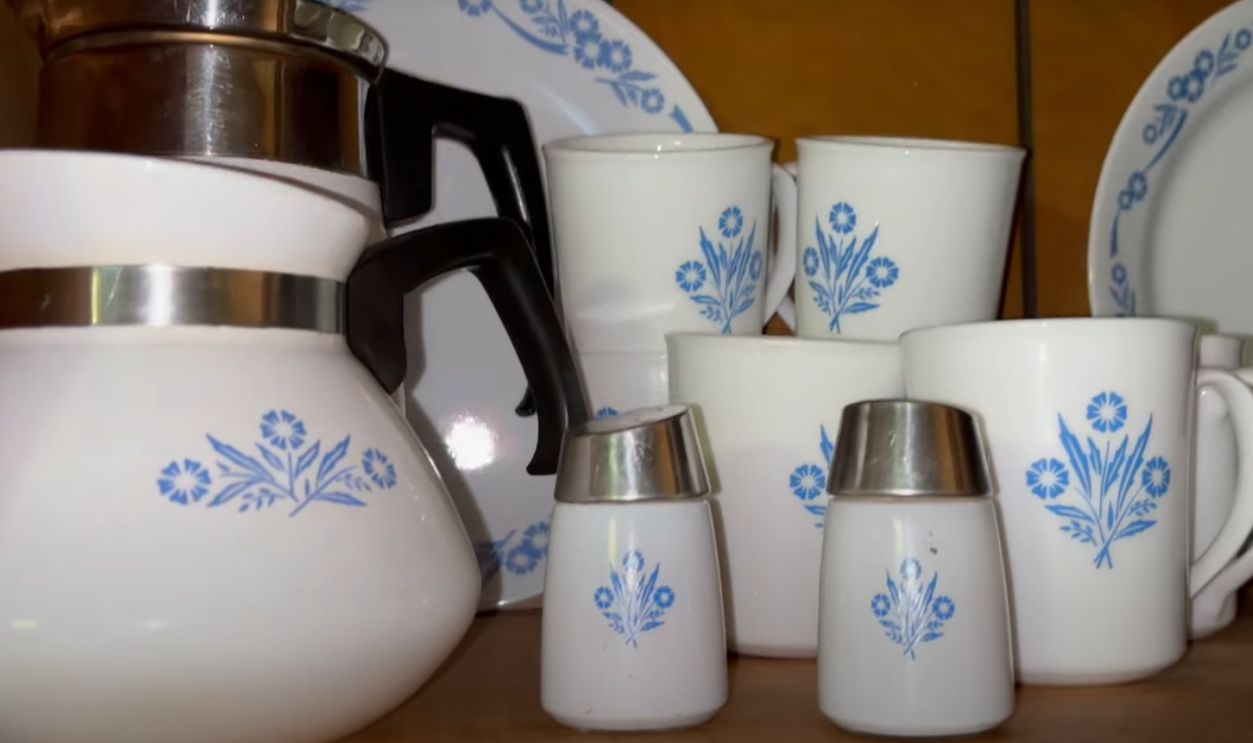 Vintage Dishes: My Corning Ware and Corelle Collection, MistyLand
Vintage Dishes: My Corning Ware and Corelle Collection, MistyLand
Where CorningWare Sells Today
Collectors find CorningWare on eBay, Etsy, estate sales, and antique shops. Auctions for rare patterns can lead to competitive bidding wars. Dedicated Facebook groups and online communities also fuel interest, connecting sellers and buyers worldwide.
Fake And Reproduction Risks
As CorningWare’s value has risen, reproductions and misrepresented pieces have shown up online. Collectors must exercise caution and verify patterns, markings, and production years. Expert guides and community knowledge are important to avoid overpaying for fakes.
Nostalgia Vs Collecting
Nostalgia plays a big part in CorningWare’s perceived value. These dishes remind a lot of people of family meals and holidays. Collectors aren’t just buying kitchenware; they’re buying the promise of bringing back old memories; people are okay with paying a premium for rare or meaningful patterns.
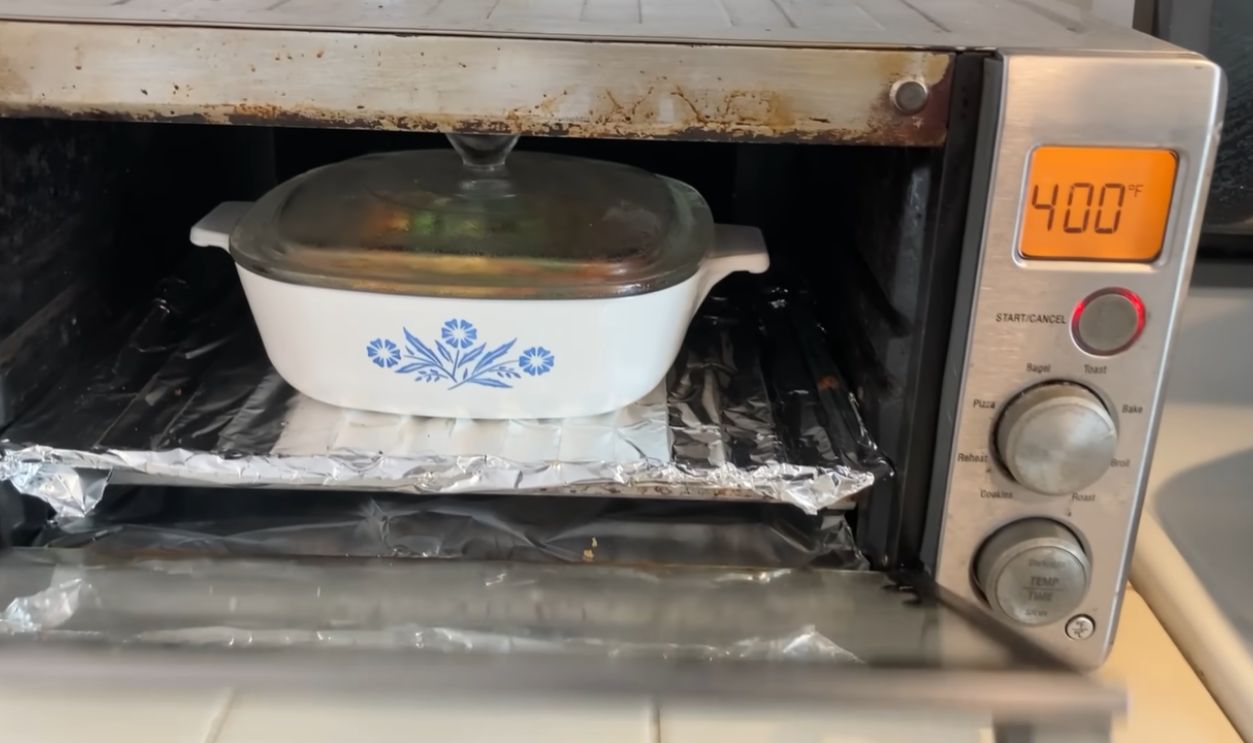 Vintage CorningWare | Most Versatile Cookware Ever Made?, I Want To Cook
Vintage CorningWare | Most Versatile Cookware Ever Made?, I Want To Cook
Corningware As An Investment
For some collectors, CorningWare is more about the investment than the nostalgia. With time, rare pieces gain in value, making them comparable to art or antiques. Not every dish is valuable but carefully chosen patterns can bring strong returns.
Popularity In 2025
The market for vintage kitchenware shows no signs of slowing down anytime soon. Social media influencers often showcase retro kitchens, and CorningWare is an obvious part of that. Younger generations are discovering its charm, which should maintain demand and strong prices well into the future.
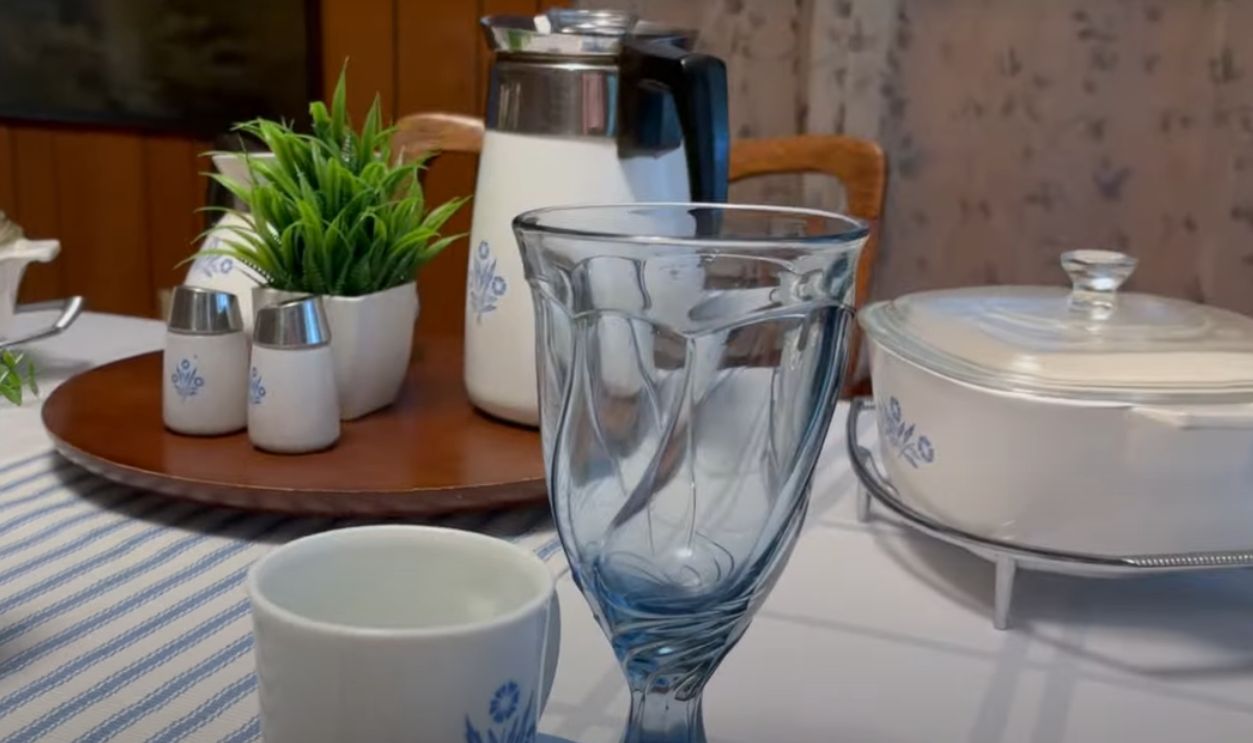 Vintage Dishes: My Corning Ware and Corelle Collection, MistyLand
Vintage Dishes: My Corning Ware and Corelle Collection, MistyLand
Key Takeaways On Valuable Patterns
From Cornflower Blue to Black Starburst, CorningWare’s collectible status goes to show how everyday kitchenware can one day become a collectible asset. Whether it’s for nostalgia purposes or pure profit motives, these pieces still capture hearts, memories, and wallets. Whether you collect CorningWare or not, if you own some, make sure you don’t donate it or let it go for peanuts in a garage sale!
You May Also Like:
Vintage Hunting Knives That Sell for Thousands
Old Cameras That Sell For Big Bucks

